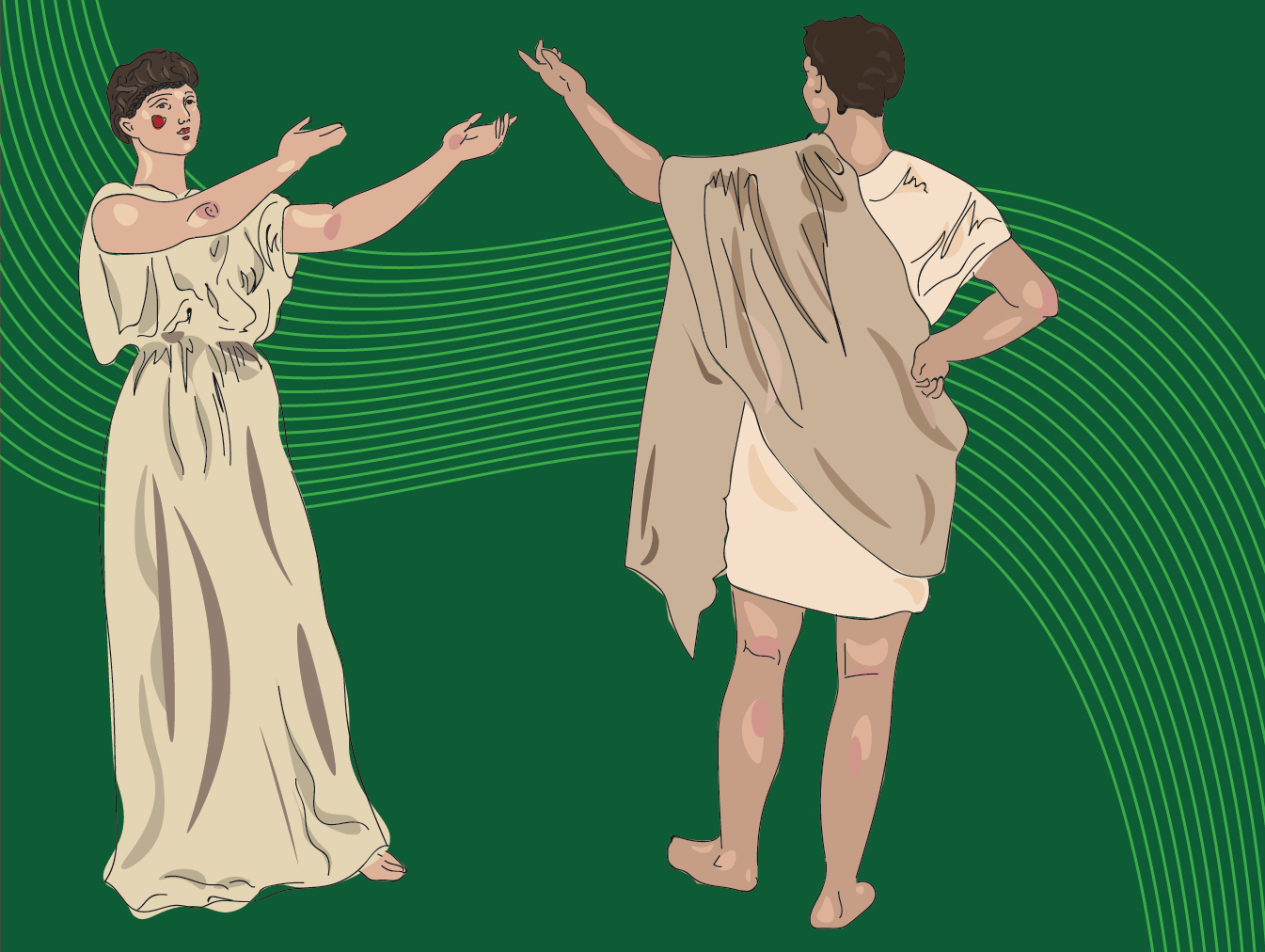Aristotle has long been a household name, particularly within the film industry thanks to his famous work, “Poetics,” in which he analyzes and discusses the arts of tragedies and epic poetry. In “Untying Aristotle’s Poetics for Storytellers,” author Rune Myrland condenses and simplifies Aristotle’s original work, allowing present and future writers easy access to the philosopher’s teachings.
Plot
Aristotle points out early in “Poetics” how the plot is central to the development of a story, placing the plot’s importance well above character development and spectacle.
He defines plot as emulations of action — often using the term “action” as a stand-in for plot — and, like action, they are motivated by a purpose to strive for a resolution.
A plot is a causal chain of events stretching from the beginning to the end of a story, but for a plot to be executed well, actions preceding and following events should be logical in that they pertain to the situation at hand, and don’t fall outside a character’s skills or capabilities.
To avoid writing illogical plots, Aristotle suggests writers shy away from episodic plots, in which episodes don’t follow one another through probable or necessary consequence, which tends to break the causal chain and natural continuity. Simply put, every action needs to happen for a reason, not by accident or coincidence.
Aristotle expands upon the qualities of actions by saying that they must be “whole.” Myrland’s “Untying Aristotle’s Poetics for Storytellers” gives the American philosopher John Dewey’s take on the term, saying the “whole” means “the formulation of a goal (or purpose) starting with an impulse that when obstructed turns into a desire.” Dewey continues to say, “This desire motivates an investigation into the situation, ending in a formulation of a plan to sate this desire.”
Myrland then adds the insight of psychologist Abraham Maslow on what the word desire may implicate, which he translates as a “need, where when the impulse is blocked, the need too is blocked, explaining why it becomes a desire.”
Dewey’s and Maslow’s insights illustrate the basic, contemporary explanation that plot usually involves several obstacles standing in the way of what protagonists want, forcing the protagonist to overcome their hurdles to achieve their desires.
In “Untying Aristotle’s Poetics for Storytellers,” Myrland states that there are five qualities Aristotle deems necessary for a well-defined plot.
- First, all plots should be justifiable in that something important must always be at stake.
- Second, it is necessary to have a beginning, middle and end.
- A plot must have a good balance of obstacles; conflicts shouldn’t be too complex or too easily solved.
- Plots should evoke pity and fear in the audience through something bad happening to someone they care for or someone powerless to defend themselves.
- Lastly, resolution is key. A well-crafted plot should relieve the audience of tension and offer some form of closure.
Character
Despite Aristotle’s stance on the plot being the most crucial element of the flow and development of a story, characters are also an undeniably important component of stories. In order for audiences to truly care about the work at hand, a story can’t have one without the other.
Aristotle says character is revealed through their choices and preferences, and act in ways “necessary and probable according to their character.” He continues to say how a character’s actions and dialogue can’t just come from a situation, but be inherent traits the character possesses the moment they are introduced to the audience.
Ultimately, if a character falls into a particular archetype, such as a mentor/guide (like Gandalf from “The Lord of the Rings”) or a trickster (Loki from “The Avengers”), they must act or speak like a mentor, or speak and act like a trickster, etc.
Aristotle defines a couple of character archetypes of his own, calling one the “decent,” which “doesn’t inflict underserved misfortune, thus doesn’t deserve misfortune,” and the other the “wicked,” which “afflicts misfortune, thus deserves misfortune.”
Modern writers can read these two characters as the hero and the villain. However, with the trend of morally ambiguous/grey characters appearing in works such as “Game of Thrones” and “Breaking Bad,” writing characters who are strictly good or bad might be obsolete.
Similarly to plot, “Untying Aristotle’s Poetics for Storytellers” also lists Aristotle’s four qualities that make characters memorable.
- For starters, “characters must be resourceful and good.” In this case, Aristotle does not mean good in the ethical sense of good versus evil, but meaning one who has enough positive attributes that make the audience want to support them.
- Characters should also maintain consistency in their personality and desires. If they are good, they should continue to be good and vice versa.
- Another important aspect of characters is their relatability to the audience. Most people want to care about characters that they can see parts of themselves reflected in.
- Characters should not be so unrealistic that they cause an audience to be taken out of the story.
Emotions
In respect to how writers can stimulate human emotions, Aristotle’s “Poetics” regards storytelling more as a science rather than an art through a focus on the psychology and emotions of the audience. “Untying Aristotle’s Poetics for Storytellers” discusses four main emotions Aristotle says are key for writers to make the audience feel to keep them from being dissatisfied.
- Pathos is the emotion from witnessing any form of trauma, such as bodily wounds, agony or death afflicted on a character not deserving of misfortune.
- Fear is evoked by an impending evil of a destructive or painful kind against characters the audience identifies with, implying a threat of pathos in the future.
- Pity is evoked by a current or foreseeable undeserved misfortune; “A well-intended or justified action headed towards misfortune because of a character flaw or mistake is the most tragic, as this is the only one that evokes pity.” Aristotle also mentions how the mistake must be visible to the audience, but remain invisible to the character (dramatic irony).
- Hope is the expected relief or end of misfortune, like when the villain is defeated or the hero gets the upper hand. The audience feels hope and roots for character actions that fight undeserved misfortune.
Visualization & Channeling A Character’s Emotions
“Untying Aristotle’s Poetics for Storytellers” gives Aristotle’s method of creating plot, saying, “Writers should visualize scenes as vividly as possible in order to avoid inconsistencies.”
For writing character emotions, Aristotle suggests writers experience the same emotions their characters endure in order to write those emotions realistically and convincingly. For example, writing a character who is in a rage is better executed when the writer is angry.
Overall, Myrland dives into some of the more ancient and outdated language in Aristotle’s original work and pulls out the core concepts that can greatly help any and all writers.
















